Stroke is the leading cause of death in Singapore, and it is expected to increase exponentially with Singapore’s ageing population.
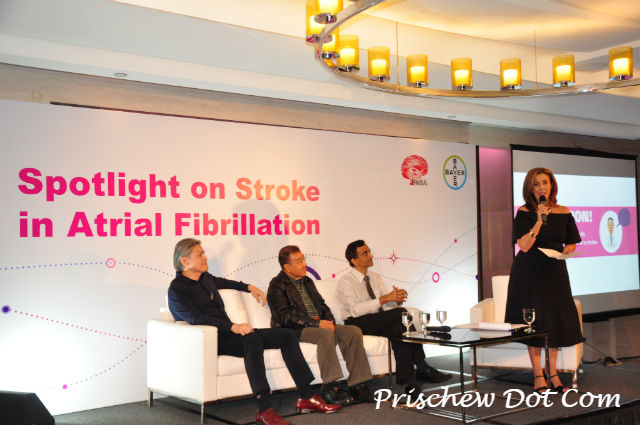
INVITED TO ATTEND SPOTLIGHT ON STROKE TALK
Prischew dot com had been recently invited to attend “Spotlight On Stroke” – this was a talk on stroke and the prevention of it, organised by Bayer.
There were several parts to the talk. The first was a section by Dr Ramani, a neurologist and stroke specialist from Raffles Hospital, who shared more information about what causes strokes and how to prevent them.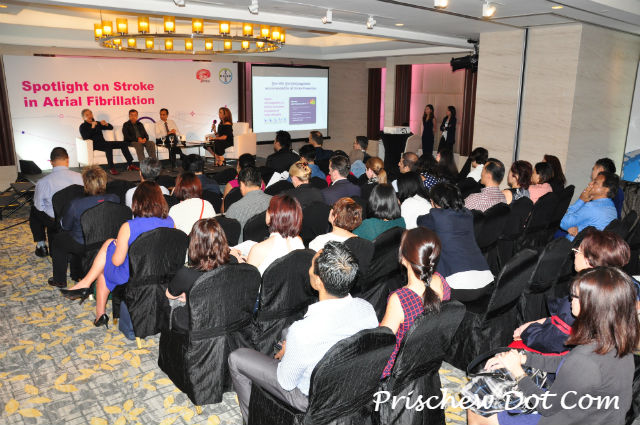
This was then followed by a talk by Anthony Quek, a stroke survivor, and Dr Tan Ru San, an AF specialist from the National Heart Centre Singapore.
INFORMATIVE AND EDUCATIONAL
Overall, the talk was very informative and it was interesting to learn that irregular heart rhythm can lead to a blood clot and hence a stroke.
I had always thought prior to the talk, that stroke is caused by narrowing of blood vessels and this resulting in bursting of blood vessels and thus stroke.
So it was a rather educational experience to find out that this was not the case.
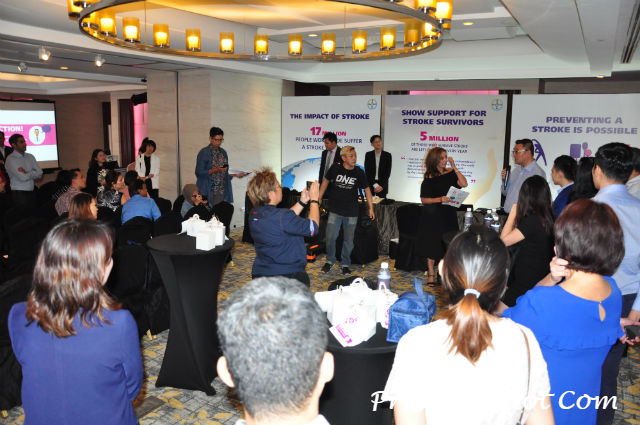
Instead the key takeaway that Prischew dot com brought back from the session was that most strokes are in fact, caused by blood clots.
CONNECTIONS BETWEEN STROKE AND AF
I also learnt about the main connections between stroke and AF (Atrial Fibrillation), as well as the warning signs and preventive measures to look out for.
Did you know that AF which is a heart condition characterised by irregular heartbeat, increases the risk of stroke by blood clots by five fold?

According to Dr Tan, if the heart does not beat regularly or not with the proper rhythm, it may flutter or quiver and fail to contract properly for someone with AF.
Explained Dr Tan, “When the heartbeat is not strong, there will be a lack of blood being pumped to the heart and in turn this causes a blood clot due to blood pooling in the heart.”
The doctor continued, “So when the blood clot breaks free and gets pumped to the brain, it causes a stroke.”

AF and AF induced stroke will be a serious problem in Singapore and Asia because, by the year 2050, Asia will have 72 million AF patients with 2.9 million suffering from an AF related stroke.
RISK FACTORS
Said Dr Ramani, “AF is especially prevalent in people above the age of 40 years old.”
Additionally, he also explained that risk factors include high blood pressure, defects in the heart valve, diabetes, stress, poor diet and sedentary lifestyle as well as a family history of heart disease.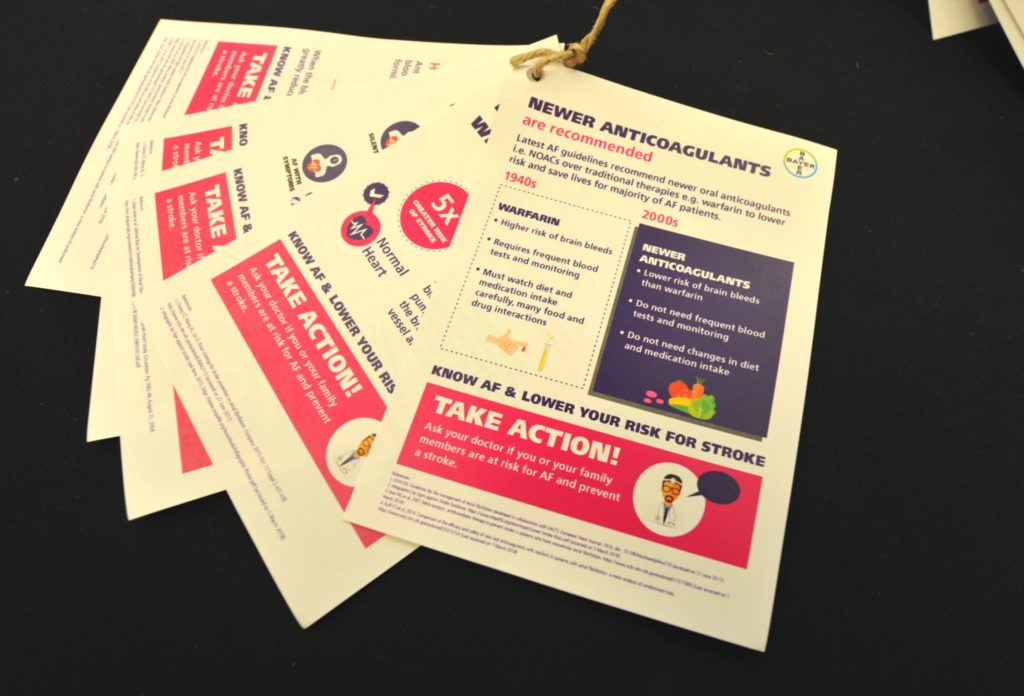
So if you are approaching the age of 40 and you have some of the risk factors, it is time to change your lifestyle for instance, by incorporating regular exercise into your daily routine or by adopting a more healthy diet and watching what you eat.
AF MAY PRESENT NO SYMPTOMS
Furthermore, it is even more scary to find out that some people with AF can have it, without even realising it.
However most people have symptoms though and some symptoms of AF may include racing or unusual heartbeat as well as fatigue or dizziness. So these are things to look out for.
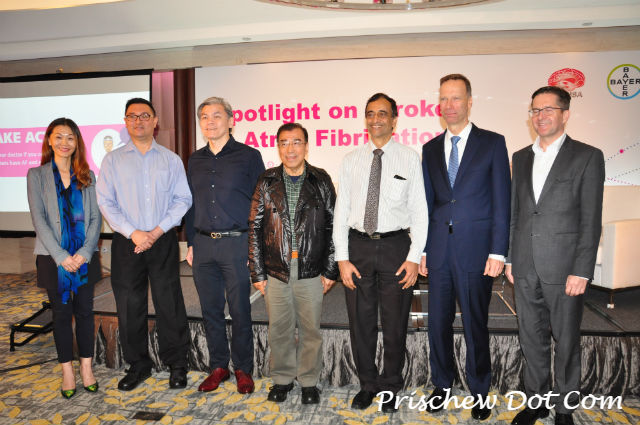
HOW TO PREVENT AF INDUCED STROKE
So then how can one prevent an AF induced stroke?
Said Dr Tan, “By taking anticoagulant medicine, this stops the blood remaining in the heart from forming a clot.”
And when the blood cannot clot, this reduces the risk of a stroke.
However not any anticoagulants can be taken though; the latest AF guidelines recommend the newer ones over the traditional types.

Explained Dr Tan, “Taking newer anticoagulants over the traditional ones also do not require frequent monitoring and blood tests and as well, there is no need for changes in diet and medication intake.”
INTO THE SHOES OF A STROKE PATIENT
The talk also took attendees to look at a stroke patient with the help of a hemiparesis simulator and this experience was really eye opening and captivating, for me.
For example, this had really drilled in the message that a stroke can indeed strike anyone, anywhere, anytime.
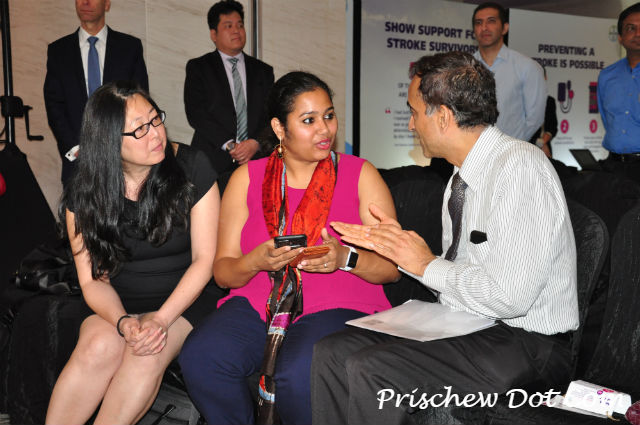
It made me realise that a completely healthy person, after getting a stroke, may find his or her life changed forever after a stroke, for instance, by being wheelchair bound.
And when you are paralysed from a stroke, the session also taught me more about how much of a shock to the body system it is. I really could not move after I went on the paralysis machine.
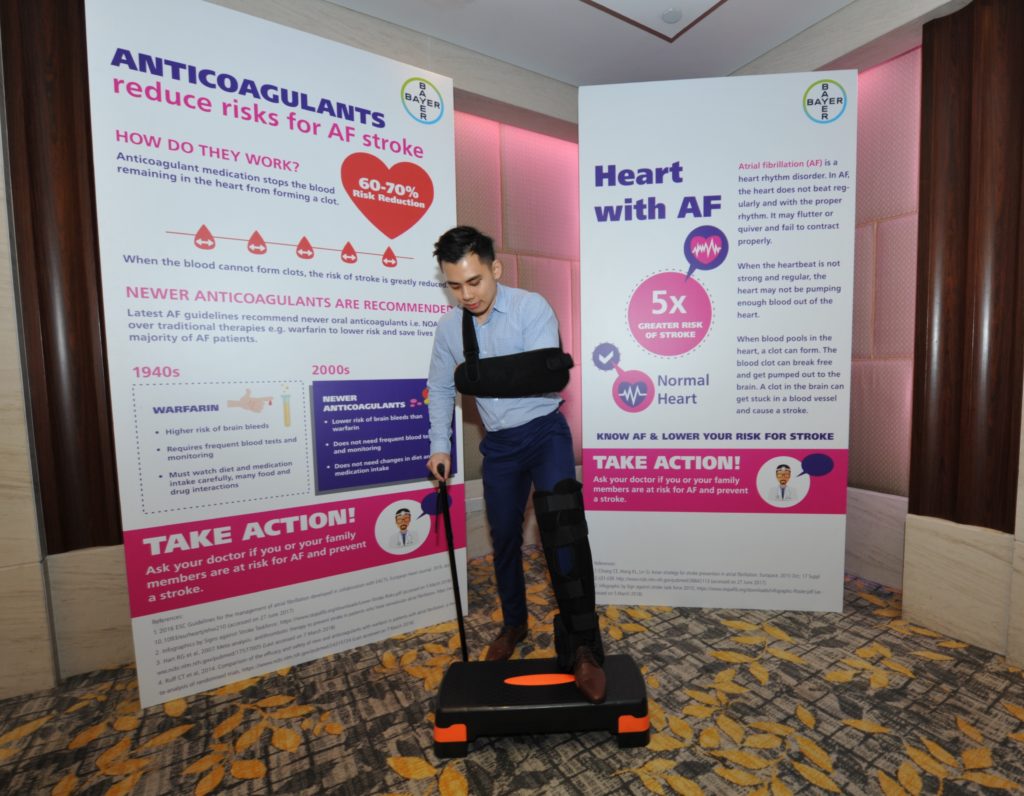
This had been quite scary to know.
This was reiterated by Quek, who said, “When I first became paralysed after a stroke, I could not accept the fact and it took me a while to come to terms with my new condition.”
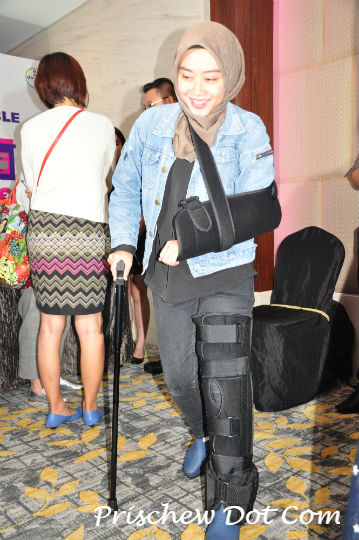
MY TAKEAWAYS
After this talk, I know that I will certainly take measures to prevent stroke occurring.
As a marathon runner and a triathlete, I am already doing regular exercise, but there are still things that I can further do to keep stroke at bay, such as attempting to reduce my stress levels and trying to adopt a healthier diet, though this may be a little hard with my sweet tooth.

Leave a Comment